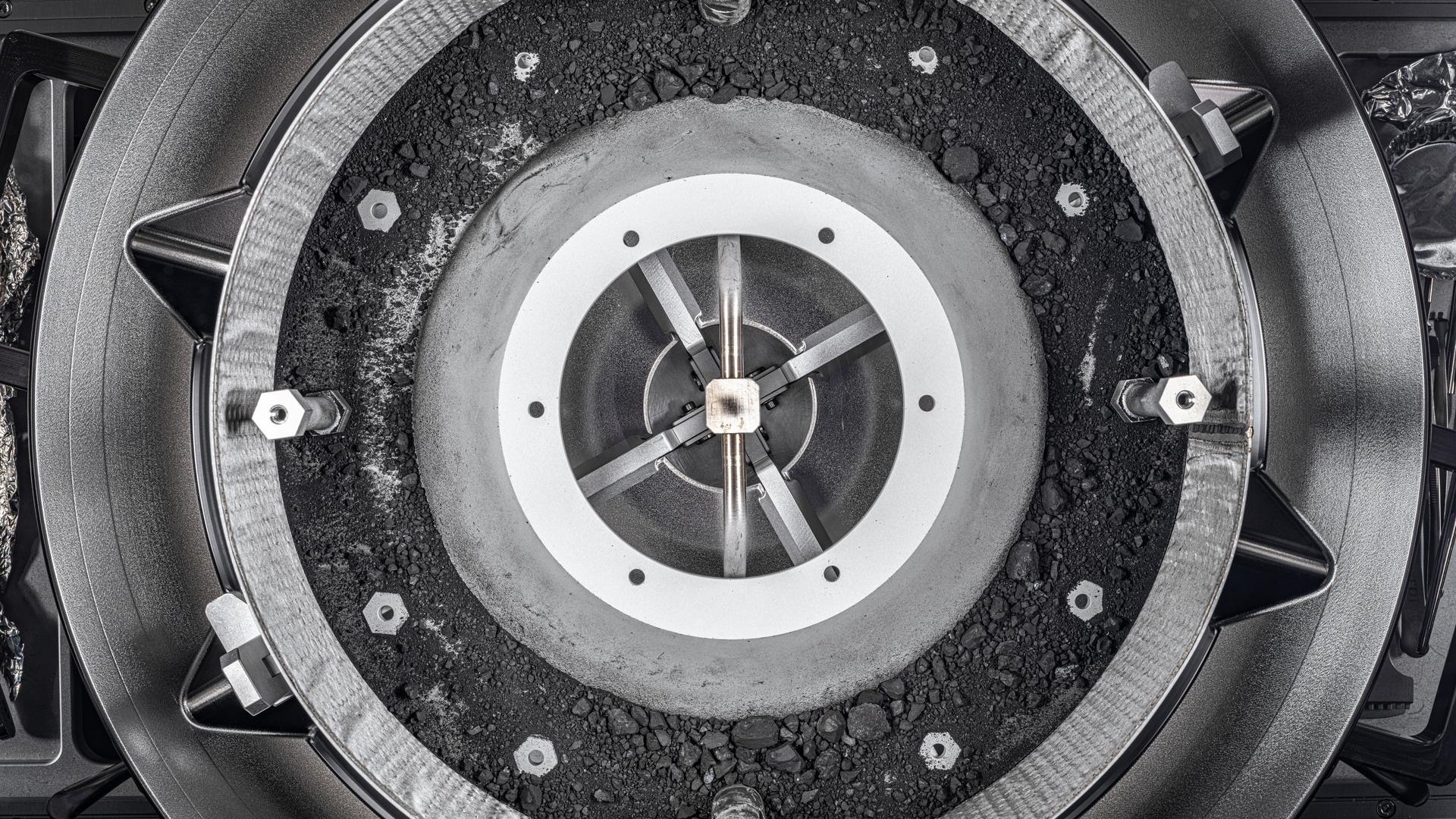NASA has more than twice the asteroid Bennu samples it could have hoped for from OSIRIS-REx probe
The once inaccessible sample container has been fully opened, and NASA has released the numbers.

We now know exactly how much material OSIRIS-REx captured from its target asteroid Bennu — and, it's a lot.
In addition to the 2.48 ounces (70.3 grams) of sample already collected from the outside of the canister, NASA has finally managed to fully open OSIRIS-REx's sample container to find another 1.81 ounces (51.2 grams) of asteroid Bennu within. In all, the probe collected more than twice what scientists had hoped for.
OSIRIS-REx completed its asteroid sample return mission when the probe parachuted a tightly-sealed container back to Earth on Sep. 24 before embarking on a secondary mission dubbed OSIRIS-APEX, named for its next space rock target, the asteroid Apophis.
With this container came the first pieces of an asteroid NASA has ever captured and returned for further study. The mission launched in 2016, and the safe recovery of the capsule last year was the ceremonious end to an epic seven-year journey through space. However, once NASA technicians got a hold of the sample container, they stumbled upon some complications — it was too difficult to open.
Related: Asteroid Bennu may 'a fragment of an ancient ocean world,' samples suggest
OSIRIS-REx's original mission goal was to collect up to 2.12 ounces (60 grams) of material, which was actually met with even just bits of Bennu spotted across the container's exterior. However, the team knew there had to be much more inside.
So, in order to access the entirety of the Bennu sample, NASA teams started designing a new tool to open the sealed container.
Get the Space.com Newsletter
Breaking space news, the latest updates on rocket launches, skywatching events and more!
To talk specifics, the container was actually secured inside a larger enclosure, built for protection during the probe's arduous journey. As OSIRIS-REx collected its asteroid samples in space, a portion of the material wound up inside this protective enclosure but outside the designated sample container, gifting scientists some of the Bennu sample before the main canister was unlocked.
Far exceeding their expectations, mission operators managed to collect 2.48 ounces (70.3 grams) before ever opening the inaccessible part of the OSIRIS-REx return capsule. Still, scientists and space enthusiasts everywhere remained waiting to see what OSIRIS-REx's grand sample total would be. And now, the new tool having been derived, scientists have access to all of the probe's asteroid sample, and the results are in.
Combined with the samples already collected, OSIRIS-REx returned a total of 4.29 ounces (121.6 grams) of material from asteroid Bennu — that's more than double the mission's goal and the largest asteroid sample ever collected, according to a recent NASA release. For comparison, the Japanese Aerospace Agency's Hayabusa2 mission only brought back about 0.18 ounces (5 grams) of material from its asteroid target, Ryugu, in Dec. 2020.
Examination of the samples has already begun, and scientists are finding "a whole realm of material" previously inaccessible using samples collected from meteorites, according to Dante Lauretta, principal investigator for OSIRIS-REx. Bennu is believed to be a remnant of the early solar system, and scientists think studying these samples could help unravel some mysteries of early planetary development.
About a quarter of the Bennu sample will remain with researchers on the OSIRIS-REx research team. NASA also plans to preserve at least 70 percent of the sample for study by scientists worldwide, as well as for future generations of researchers.
Join our Space Forums to keep talking space on the latest missions, night sky and more! And if you have a news tip, correction or comment, let us know at: community@space.com.

Josh Dinner is the Staff Writer for Spaceflight at Space.com. He is a writer and photographer with a passion for science and space exploration, and has been working the space beat since 2016. Josh has covered the evolution of NASA's commercial spaceflight partnerships and crewed missions from the Space Coast, as well as NASA science missions and more. He also enjoys building 1:144-scale model rockets and human-flown spacecraft. Find some of Josh's launch photography on Instagram and his website, and follow him on X, where he mostly posts in haiku.
-
Cisventure Astronot This is an awesome success, but there was only 51.2 g inside the capsule? If it was only the stuff inside, then this mission wouldn't meet their 60 g hopes. Was this because the sample was a finer grain than expected? If all went to plan, then would they have gotten what they wanted? Did they always think there would be some stuck on the outside? Is the sample inside more pristine than the stuff on the outside?Reply -
billslugg From what I could find, the sample device was held open by rocks, which is why they stowed it immediately versus doing a measurement of the spacecraft inertia to determine how much they got. They saw by image they had a good size sample and they did not want the thrusting to cause sample loss. The entire sample grabbing system was stowed inside a leakproof capsule so all of the sample is pristine, even that on the outside of the sample container.Reply









